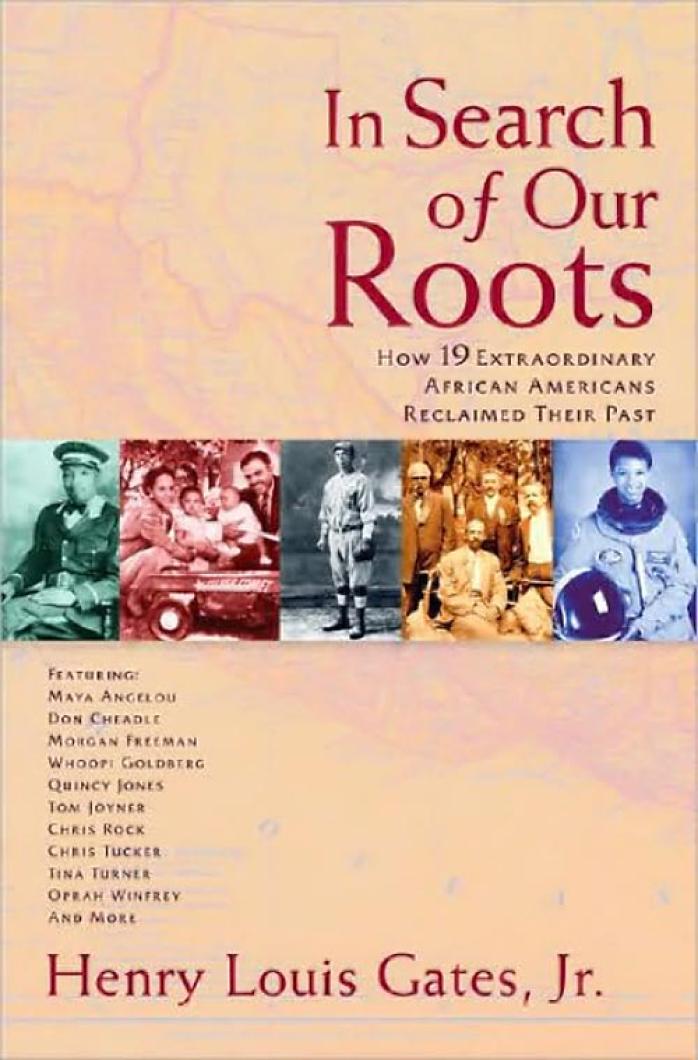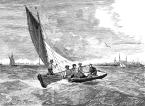IN SEARCH OF OUR ROOTS: How 19 Extraordinary Americans Reclaimed Their Past. By Henry Louis Gates Jr. Crown. January, 2009. 424 pages. $27.50.
Flowing from his PBS documentary African American Lives, Henry Louis Gates Jr. writes a remarkable book, In Search of Our Roots: How 19 Extraordinary Americans Reclaimed Their Past. Written within the context of slavery, its impact and aftermath, the author leads us not so gently into that system which systematically erased family heritage, stripping away the religion, family and cultures of captured Africans.
The introduction is movingly crafted to provide background for the reader to understand why the work is important. As a result of the brutal system of slavery, the ability of modern day African Americans to connect their family lineage to slave ancestors and to Africa has been nearly impossible until now.
Gates selected 19 high-profile African Americans across careers as his subjects. With them he conducted genetic research for more than three and a half years. To cite some — Maya Angelou, Quincy Jones, Morgan Freeman, Tina Turner, Whoopi Goldberg, Chris Rock, Oprah Winfrey, Mae Jemison, the first black female astronaut, and Benjamin Carson, head of pediatric neurosurgery at Johns Hopkins University.
In addition to his quality research, Gates is a masterful storyteller. He presents brief, engaging biographies of his subjects, weaving into each profile their slave ancestors, whom he and his team traced and analyzed. Those recreated family trees had long eluded these individuals, as is the case for so many other African Americans.
Like many of us, Gates’ subjects desperately wanted to make sense of several burning questions: Where did my people originate? Are the stories within my oral tradition, those I’ve heard all of my life, valid? How can I be sure?
Gates is well positioned for the extraordinary effort to answer those questions. He first became interested in tracing his own family history as a child of 10; this among other influences formed the basis of his life’s work and achievements in African and African American history. He is the director of the W.E.B. Du Bois Institute for African and African American Research and holds the distinguished title of Alphonse Fletcher University Professor at Harvard.
For this project, he employed a team of world-class researchers and geneticists, bringing scientific credibility to his research. This methodology most convincingly evidences that it is possible to recreate African American family trees through the horrors of slavery and come up with meaningful results.
Gates has moved the methodology of researching black ancestry to a new level, beyond the eye-opening blockbuster book Roots: The Saga of an American Family (1976), which ignited the desire of many Americans to search their roots. He successfully avoids many of the pitfalls of this prior work. By bringing scientific analysis to the task of African American identity, the author introduces a new element in the genealogical search for descendants of enslaved Africans. In so doing, he clearly demonstrates the practical use of DNA markers embodied in the genetic code.
It is now possible for African Americans to move beyond the visible historical record, where photographs of ancestors of varying skin tones and hair textures always have told the story of their genetic connections. The oral tradition, or historical narrative handed down by generations of relatives over the years, which served as the record of black America’s heritage and identity over the centuries, has now been coupled with the applied genealogical technology.
Our history is written into our cells. Using DNA technology to determine who is family is at once powerful and empowering. The technical elements of this are laid out here in understandable language that will help others in their own search and further research. For example, Gates explains in each participant profile how the mitochondrial and patrilineal DNA fall into a variety of large groupings, referred to as genetic signatures, that can be traced to a complex and diverse sample of the geographic areas in which our African ancestors lived.
Gates diligently recalls, and repeats throughout the work, the systemic patterns of the American slavery experience, in which slaves were identified as property and legally stripped of any record of their past, something otherwise all too frequently dismissed as what happened long ago and can’t be discussed. There are no sermons here; the author’s adroit descriptions, though, will move many towards a deeper understanding of why there is need to know and appreciate that background.
A step-by-step method on how to trace your own roots is provided in the last chapter. Of particular interest is the Trans-Atlantic Slave Trade Database, which may be new to some family researchers; it contains detailed information on the voyages which took place between 1514 and 1866 to the United States and the new world.
We owe the author a huge debt of gratitude for this work, and though it is easy and often entertaining reading, it should not be dismissed as a guide to tracing your African ancestry. When the racial composition of at least 19.6 per cent of African Americans is at least 25 per cent European (equivalent of one grandparent), as determined by Gates’ researchers, there is a subtext that makes the argument, tempered for some: The American family of every pigmentation shares genes, connected in an ancestral tapestry that has particular resonance for all Americans, not just African Americans. As such, Gates’ work should help to erase the erroneous notion of race as a pure and simple, one-dimensional marker for who we are and from whence we come.
It is no small matter that this book, in addition to other markets, has great potential for improving high school scholarship. It can forge enduring links between history and English departments in teaching the humanities and the wider African American culture. It should be required reading. Neglect of the topic in secondary education has led to misunderstanding, mischaracterization and outright fear of teaching and talking about slavery such that students can relate those inhuman acts to their own family values. In 2009, Gates has provided a road map to discover new knowledge about African American descendants who have eluded us for so long, and schools should take advantage of it.
Henry Louis Gates, Jr. has opened a new chapter in African American genealogical research, which is in its infancy. His work marks an enormous step that promises to be a window into historical mystery, a step for many African Americans to reclaim their own past.
Dr. Bettye Foster Baker is the author of the children’s book What is Black, Franklin Watts. Her latest manuscript, Hattie’s Decision, is due for publication winter, 2009.






Comments
Comment policy »